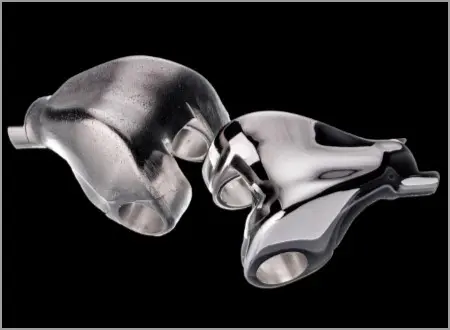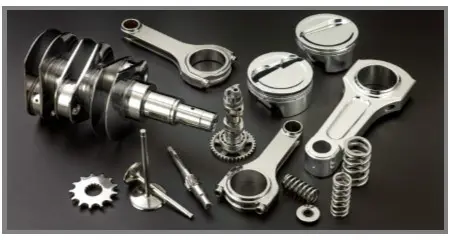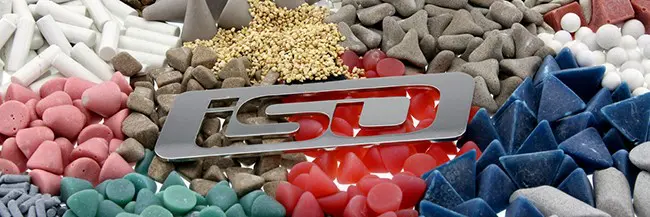Simply put, Isotropic means “having uniform physical properties in all directions”. In the mass finishing world, isotropic finishing refers to the surface of the component no longer showing any of the peaks, grinding marks, burrs or other imperfections commonly experienced in the machining, molding or casting processes. Isotropic mass finishing ensures a part’s surface will have no discernible marks, lines or patterns. A microscope is often required to see any of the minute imperfections left on the surface of the finished part.
 Why is a Smooth Surface so important?
Why is a Smooth Surface so important?
The surface finish dictates the performance, integrity, durability and service life of any component. Surface smoothness directly impacts the ability of the part to resist friction and wear, two of the main factors determining a part’s overall life cycle and cost.
Titanium, stainless and polymer components produced for the medical industry illustrate the importance of the final surface finish. Surfaces finished isotropically reduce infection potential and improve the biocompatibility, both critically important for orthopedic, cardiovascular and all other implants. Improved surface finishes can reduce rejection and related complications, ultimately improving surgery success and patient outcomes.

Another vivid example of the need for Smooth Surfaces sits just inches in front of us as we commute to work each day. The internal combustion engine is a culmination of over a hundred years of engineering refinement in efforts to reduce friction, heat, wear and vibration. Isotropic finishing can be employed create micro-finished surfaces to improve part to part uniformity, allowing engineers to take full advantage of the design process. The same isotropic principals can also be applied to create a functional cross hatch surface to distribute and retain oil, increasing lubricity, lowering overall friction, resulting in greater longevity and lowering overall operating costs.
Are there different methods of Isotropic Finishing?
There are multiple mass finishing techniques used to achieve a high quality surface finish, including blasting, lapping and electropolishing. While each method has its own specific strengths, Vibratory systems and Centrifugal Barrel (high energy) machines have become the most widely used methods.
Vibratory Finishing
With Vibratory finishing, a component is submerged into a bowl or tub along with media (small abrasive pellets often made of ceramic, plastic, steel or other synthetic material) and water. Eccentric weights mounted on a vertical shaft create vibrations, creating a rolling motion which causes all of the contents to rub against each other. The millions of unique impressions of the media on the part creates the smoothing effect on the surface.

Centrifugal Barrel Finishing
Centrifugal barrel finishing uses the same media as in the vibratory process. Parts and media are loaded into one of four barrels mounted to a center hub, much like a Ferris wheel. Rapid rotation of the barrels produces increased G-forces on the media to create a uniform, non-directional finish. Centrifugal processing is able to achieve superior surface conditions more quickly and without the use of chemical accelerants.
So which process is best?
Vibratory and centrifugal finishing are highly customizable based upon the desired finish. ISO Finishing’s skilled engineers and technicians have the experience and expertise to design the most effective process for the specific type of finish your parts require.
ISO Finishing provides complete finishing services for all major markets including medical, aerospace, dental, automotive, OEM, military, plastic, hydraulic, pharmaceutical and firearm industries. Through our work with various titanium, stainless, silicone and polymer alloys, we have developed and documented processes designed to ensure each finished part exceeds the most demanding requirements.


